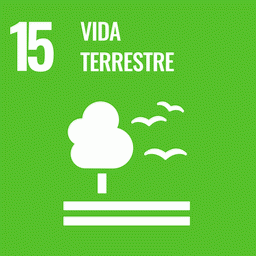The Brazilian savanna (known as Cerrado) is an upland biome made up of various vegetation types from herbaceous to arboreal. In this paper, MODIS remote sensing vegetation greenness from the Enhanced Vegetation Index (EVI) and evapotranspiration (ET) data for the 2000–2012 period were analyzed to understand the differences in the net primary productivity (NPP-proxy), carbon, and the evaporative flux of the major Cerrado natural and anthropic landscapes. The understanding of the carbon and evaporative fluxes of the main natural and anthropic vegetation types is of fundamental importance in studies regarding the impacts of land cover and land use changes in the regional and global climate.
The seasonal dynamics of EVI and ET of the main natural and anthropic vegetation types of the Cerrado biome were analyzed using a total of 35 satellite-based samples distributed over representative Cerrado landscapes. Carbon and water fluxes were estimated for different scenarios, such as, a hypothetical unconverted Cerrado, 2002 and 2050 scenarios based on values derived from literature and on the PROBIO land cover and land use map for the Cerrado. The total growing season biomass for 2002 in the Cerrado region was estimated to be 28 gigatons of carbon and the evapotranspiration was 1336 gigatons of water. The mean estimated growing season evapotranspiration and biomass for 2002 was 576 Gt of water and 12 Gt of carbon for pasture and croplands compared to 760 Gt of water and 15 Gt of carbon for the Cerrado natural vegetation. In a modeled future scenario for the year 2050, the ET flux from natural Cerrado vegetation was 394 Gt less than in 2002 and 991 Gt less than in an unconverted scenario, with only natural vegetation, while the carbon was 8 Gt less than in 2002 and 21 Gt less than in this hypothetical pre-conversion Cerrado. On the other hand, the sum of the pasture and cropland ET flux increased by 405 Gt in 2050 relative to 2002 and the carbon by 11 Gt of carbon.
Given the increasing global demand for agricultural products and the insufficient protected areas in the Cerrado (with a significant area of remaining native vegetation in privately owned lands that may be legally deforested), our analyses suggest that potential future changes to the water and carbon balances are likely to be highly significant in the severely threatened Cerrado biome. On the other hand, our results also suggest that the recovery of degraded pastures can have a positive impact on climate, due to the higher rates of carbon sequestration and water transfer to the atmosphere.
